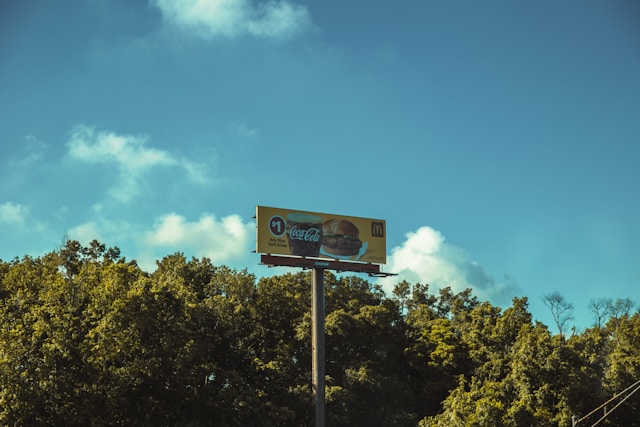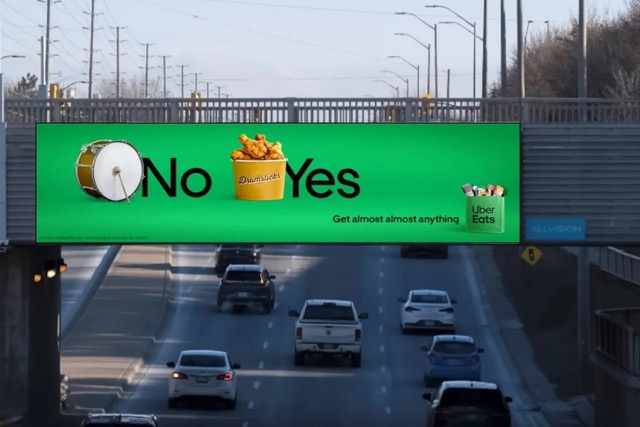
India’s Outdoor Advertising Market in 2025: Trends, Growth, and Challenges
India’s skyline is changing - not just architecturally, but visually.
The once-static hoardings that lined highways and malls are now being replaced by digital, data-driven, and dynamic screens.
The Out-of-Home (OOH) and Digital Out-of-Home (DOOH) advertising sectors in India are at an inflection point. In 2025, they’re not just growing - they’re transforming into technology-powered ecosystems that merge creativity with analytics.
At Adcentra.ai, we’ve been closely tracking this evolution - bridging the gap between advertisers, agencies, and media owners through AI-led automation and transparency.
🧭 The Evolution of India’s OOH Market
For decades, outdoor advertising has been a cornerstone of Indian marketing - from iconic film posters in Mumbai to highway billboards promoting consumer brands.
However, until recently, the medium remained largely manual, fragmented, and opaque.
That’s changing fast.
📊 India’s OOH Landscape in Numbers
- Market size (2024): ~₹5,200 crore ($625M)
- Projected growth (2025): ~₹6,000 crore+
- Share of DOOH: Expected to cross 20% of total OOH spend
- Annual CAGR (2025–2030): Estimated 12–15%
India is now one of the fastest-growing OOH markets in Asia, driven by urban expansion, government smart-city projects, and digital transformation.
🚀 Section 1: Key Growth Trends Shaping 2025
India’s OOH market is riding a wave of innovation, fueled by both technological advancements and shifting consumer behavior.
| Market Trend | Impact on Outdoor Advertising |
|---|---|
| Digitization of Screens | Transition from static to digital inventory across metro and tier-2 cities. |
| 5G Rollout | Enables real-time ad delivery, remote monitoring, and data-driven insights. |
| Urban Mobility | Increased exposure via metro, airports, and EV charging stations. |
| Smart Cities Initiative | Government-led infrastructure modernization fuels new ad surfaces. |
| AI and Automation | Optimized campaign targeting, proof-of-play, and performance tracking. |
🌆 1️⃣ Digitization & Smart Infrastructure
With rising smart-city initiatives, municipalities are replacing static hoardings with high-definition digital displays.
By 2025, an estimated 50,000+ digital screens are expected to operate across Tier-1 and Tier-2 cities.
📶 2️⃣ The 5G Effect
The arrival of 5G unlocks faster data sync, remote creative updates, and context-based ad triggers - such as weather, time, and traffic.
🚗 3️⃣ Mobility & Transit Growth
With India’s rapid public transport expansion, advertisers can now target:
- Metro and railway commuters
- In-cab and airport travelers
- EV charging zones and business hubs
🧠 4️⃣ AI & Automation
AI-driven adtech platforms like Adcentra.ai are turning outdoor campaigns from static media buys into dynamic, data-verified experiences.
💡 Section 2: The Shift from Static to DOOH & Automation
The shift to Digital Out-of-Home (DOOH) represents a paradigm change - where automation and audience data redefine the rules of visibility.
| Then (Traditional OOH) | Now (Programmatic DOOH) |
|---|---|
| Manual media buying | Automated, self-serve platforms |
| Fixed-duration bookings | Real-time, flexible campaigns |
| No performance tracking | Live analytics and proof-of-play |
| Vendor-driven pricing | Dynamic, data-based pricing |
| One-size-fits-all creatives | Contextual and adaptive ads |
Why DOOH Is Gaining Ground:
- Measurability: Campaign data can now be tracked, verified, and optimized.
- Flexibility: Advertisers can buy short bursts of airtime rather than full-month slots.
- Engagement: Digital screens enable motion, interactivity, and contextual messaging.
- Omnichannel Integration: DOOH aligns seamlessly with digital and mobile campaigns.
This digitalization allows advertisers to think of outdoor media the same way they think of Google or Meta ads - trackable, automated, and performance-driven.
⚠️ Section 3: Major Challenges Hindering Growth
Despite its potential, the Indian OOH industry still faces several structural and operational challenges.
1️⃣ Fragmented Supply
Thousands of regional vendors own scattered inventories across cities. This makes centralized planning and execution difficult for national advertisers.
2️⃣ Limited Transparency
Many media buys still rely on Excel sheets and manual proofing - leading to trust issues between advertisers and media owners.
3️⃣ Compliance & Regulation
Municipal advertising policies vary across states, creating inconsistent rules around display formats, brightness levels, and environmental standards.
4️⃣ Lack of Unified Measurement
While digital platforms offer impression-based tracking, OOH measurement is still evolving - with no universal rating system yet in place.
5️⃣ Underutilization of Data
Media owners often fail to leverage audience and location data effectively, resulting in missed monetization opportunities.
These bottlenecks underline the need for AI-powered platforms that simplify discovery, booking, and verification.
🤖 Section 4: The Role of AI and Programmatic Solutions
Artificial Intelligence is redefining how outdoor advertising operates - making it smarter, faster, and more measurable.
Here’s what AI brings to the table:
| AI Capability | Outcome for OOH/DOOH |
|---|---|
| Predictive Analytics | Forecasts audience reach and engagement potential for each screen. |
| Dynamic Creative Optimization (DCO) | Adjusts ad content in real-time based on weather, time, or event triggers. |
| Anomaly Detection | Flags screens that fail to display content or underperform. |
| Proof-of-Play Validation | Verifies every ad run through sensor or beacon data. |
| Yield Optimization | Suggests dynamic pricing models for media owners based on demand trends. |
🔍 Real-World Example:
A beverage brand can use AI to:
- Identify top 20 high-footfall zones in Bengaluru.
- Display weather-based creatives (“Beat the Heat”) only when temperature >30°C.
- Optimize spend daily based on screen performance data.
This level of precision wasn’t possible in OOH even a few years ago.

🧩 Section 5: Adcentra.ai - A Case Study in Market Modernization
Adcentra.ai is at the forefront of India’s DOOH transformation - building a data-driven marketplace that connects advertisers, agencies, and media owners in one unified ecosystem.
🔹 What Adcentra.ai Offers:
- Programmatic DOOH Platform: Real-time inventory discovery and booking.
- AI Planning Engine: Predictive campaign design using audience and geospatial data.
- Dynamic Creative Delivery: Triggered creatives based on time, traffic, or weather.
- Proof-of-Play Analytics: Automated verification for transparent reporting.
- Owner Dashboards: Screen utilization, dynamic pricing, and payment tracking.
By aggregating digital screens across metros and Tier-2 markets, Adcentra.ai creates a supply-led marketplace that empowers advertisers with scale and precision.
The result?
- Advertisers gain efficiency and visibility.
- Agencies simplify operations.
- Media owners monetize inventory better.
📈 Section 6: The 2025–2030 Forecast
The next five years will determine the pace and direction of India’s OOH revolution.
📊 Projected Growth Indicators
| Metric | 2025 | 2030 (Forecast) | CAGR (2025–2030) |
|---|---|---|---|
| Total OOH Market | ₹6,000 Cr | ₹10,800 Cr | ~12% |
| DOOH Share | 20% | 45% | ~18% |
| Screens in Operation | 50,000+ | 1,20,000+ | Rapid Tier-2 expansion |
🌍 Tier-2 & Tier-3 Market Potential
While metros like Mumbai, Delhi, and Bengaluru dominate today’s ad spend, Tier-2 cities like Kochi, Indore, Lucknow, and Jaipur are emerging as high-yield markets due to:
- Affordable screen setup costs
- Growing local brand participation
- Smart city and retail expansion
- Lower clutter and better audience recall
As advertisers seek efficient reach beyond metros, AI-led DOOH platforms will drive scalable hyperlocal campaigns across these cities.
🤝 Section 7: Collaboration Drives Next-Gen OOH
The success of India’s OOH industry depends on collaboration between media owners, agencies, and tech enablers.
What the Future Looks Like:
- Standardized Metrics: Common frameworks for audience measurement.
- Open Marketplaces: Platforms like Adcentra.ai making access transparent.
- Creative Innovation: Integration of AR/VR and interactive content.
- Sustainability: Energy-efficient DOOH powered by solar and LED tech.
By combining creative storytelling with technological intelligence, India’s outdoor media can achieve the same agility and transparency as digital marketing.
🏁 Conclusion
The year 2025 marks a turning point for India’s outdoor advertising industry.
OOH and DOOH are no longer competing formats - they’re converging under a unified, data-led vision.
With AI, programmatic buying, and proof-based performance, advertisers can now achieve both reach and accountability.
And with platforms like Adcentra.ai, the industry is entering an era where every billboard, screen, and surface becomes part of a measurable, intelligent advertising network.
Adcentra.ai - powering the future of outdoor media, one intelligent campaign at a time.
💬 FAQs
1️⃣ How big is India’s OOH advertising market in 2025?
The OOH market in India is valued at around ₹6,000 crore in 2025, with DOOH accounting for nearly 20% of total ad spends.
2️⃣ What challenges does the industry face?
Fragmentation, compliance variability, and limited measurement standards remain key barriers to full-scale digitization and automation.
3️⃣ How is Adcentra.ai contributing to this transformation?
Adcentra.ai provides an AI-powered marketplace that enables programmatic DOOH buying, proof-of-play verification, and data-driven optimization for both advertisers and media owners.
Published by AdCentra.ai - Building the future of intelligent outdoor advertising in India.
